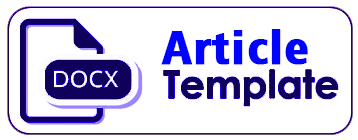Education management in the new normal era: a literature study
DOI:
https://doi.org/10.47200/aoej.v15i1.2357Keywords:
Education, management, new normalAbstract
The objective of this article is to offer a general overview of how face-to-face learning can be utilized in the context of the new normal era and to identify potential learning models that teachers can employ in addressing educational challenges within this era. In the process of developing this article, a literature review method was employed. The data collection process included a comprehensive review of various references from national and international journals that are pertinent to the subject matter under discussion. Upon conducting thorough research, the author will then select, analyze, and present results in a systematic manner. The learning model represents a significant element within the context of learning. As an individual occupying a pivotal role in the learning process, the teacher is responsible for applying an optimal learning model to ensure the successful attainment of learning objectives. A selection of models that can be utilized for learning within the new normal era includes: Three learning models are worthy of mention: Blended Learning, Flipped Classroom, and Hybrid Learning. In applying any of the aforementioned models to the learning process, it is important to consider the specific characteristics of each learner and the abilities of the instructor.
Downloads
References
Aristika, A., Darhim, ., Juandi, D., & Kusnandi, . (2021). The Effectiveness of Hybrid Learning in Improving of Teacher-Student Relationship in Terms of Learning Motivation. Emerging Science Journal, 5(4), 443–456. https://doi.org/10.28991/esj-2021-01288
Asakir, I., & Mahmudah, F. (2022). Kreativitas dan Inisiatif Guru dalam Pengembanggan Mutu Pembelajaran Online. Jurnal Studi Guru Dan Pembelajaran, 5(1), 31–40. https://doi.org/10.30605/jsgp.5.1.2022.1541
Asyafah, A. (2019). MENIMBANG MODEL PEMBELAJARAN (Kajian Teoretis-Kritis atas Model Pembelajaran dalam Pendidikan Islam). TARBAWY : Indonesian Journal of Islamic Education, 6(1), 19–32. https://doi.org/10.17509/t.v6i1.20569
Dra. Indrawati, M. (2016). Pelatihan Widyaiswara Penyesuaian/Inpassing.
Fatwa, A. (2020). Pemanfaatan Teknologi Pendidikan Di Era New Normal. Indonesian Journal Of Instructional Technology, 1(2), 20–30.
Goedhart, N. S., Blignaut-van Westrhenen, N., Moser, C., & Zweekhorst, M. B. M. (2019). The flipped classroom: supporting a diverse group of students in their learning. Learning Environments Research, 22(2), 297–310. https://doi.org/10.1007/s10984-019-09281-2
Habibi, M. F. A., & Astuti, A. P. (2021). Ismuba Learning Problems And Solutions During Pandemic In Elementary School. Nidhomul Haq: Jurnal Manajemen Pendidikan Islam, 6(2), 342–362. https://doi.org/https://doi.org/https://doi.org/10.31538/ndh.v6i2.1580
Hamid, A., & Hadi, M. S. (2020). Desain Pembelajaran Flipped Learning sebagai Solusi Model Pembelajaran PAI Abad 21. QUALITY, 8(1), 149. https://doi.org/10.21043/quality.v8i1.7503
Hasanudin, C., Supriyanto, R. T., & Pristiwati, R. (2020). Elaborasi Model Pembelajaran Flipped Classroom Dan Google Classroom Sebagai Bentuk Self-Development Siswa Mengikuti Pembelajaran Bahasa Indonesia Di Era Adaptasi Kebiasaan Baru (Akb). Jurnal Intelegensia, 8(2), 85–97. https://doi.org/http://dx.doi.org/10.34001/intelegensia.v8i2.1414
Hayati, S. (n.d.). Belajar Dan Pembelajaran Berbasis Cooperative Learning. Graha Cendekia, 120.
Hrastinski, S. (2019). What Do We Mean by Blended Learning? TechTrends, 63(5), 564–569. https://doi.org/10.1007/s11528-019-00375-5
Inggriyani, F.-, Hamdani, A. R., & Dahlan, T. (2019). Minat Belajar Mahasiswa dengan Menggunakan Blended Learning melalui Google Classroom pada Pembelajaran Konsep Dasar Bahasa Indonesia SD. PEMBELAJAR: Jurnal Ilmu Pendidikan, Keguruan, Dan Pembelajaran, 3(1), 28. https://doi.org/10.26858/pembelajar.v3i1.8649
Iriansyah, H. S. (2020). Membangun Kreativitas Guru dengan Inovasi Pembelajaran di Masa Pandemi Covid-19. Prosiding Seminar Nasional Pendidikan STKIP Kusuma Negara II, 1, 1–6.
Jasim Mohammed, H., & Ati Daham, H. (2021). Analytic Hierarchy Process for Evaluating Flipped Classroom Learning. Computers, Materials & Continua, 66(3), 2229–2239. https://doi.org/10.32604/cmc.2021.014445
Kholiqul Amin, A. (2017). Kajian Konseptual Model Pembelajaran Blended Learning Berbasis Web Untuk Meningkatkan Hasil Belajar Dan Motivasi Belajar. Jurnal Pendidikan Edutama, 4(2), 62.
Mahmudah, F. N., & Putra, E. C. S. (2021). Tinjauan pustaka sistematis manajemen pendidikan: Kerangka konseptual dalam meningkatkan kualitas pendidikan era 4.0. Jurnal Akuntabilitas Manajemen Pendidikan, 9(1), 43–53. https://doi.org/10.21831/jamp.v9i1.33713
Makhin, M. (2021). Mudir (Jurnal Manajemen Pendidikan) Hybrid Learning: Model Pembelajaran Pada Masa Pandemi Di Sd Negeri Bungurasih Waru Sidoarjo. Mudir : Jurnal Manajemen Pendidikan, 3(2).
Maolidah, I. S., Ruhimat, T., & Dewi, L. (2017). Efektivitas Penerapan Model Pembelajaran Flipped Classroom Pada Peningkatan Kemampuan Berpikir Kritis Siswa. Edutcehnologia, 3(2), 160–170.
Mardiyantoro, N. (2019). Metodologi Penelitian. Elearning Fastikom, 1–18.
Marlina, E. (2020). Pengembangan Model Pembelajaran Blended Learning Berbantuan Aplikasi Sevima Edlink. Jurnal Padegogik, 3(2), 104–110. https://doi.org/10.35974/jpd.v3i2.2339
Maspul, K. A., & Amalia, F. (2021). The Role of Parents in the Implementation of Hybrid Learning Toward School Normalisation in Indonesia. Academia Letters. https://doi.org/10.20935/AL3588
Pacheco, J. A. (2021). The “new normal” in education. PROSPECTS, 51(1–3), 3–14. https://doi.org/10.1007/s11125-020-09521-x
Qoriawati, U., & Maknun, L. (2021). Upaya Peningkatan Kualitas Pembelajaran Daring bagi Peserta Didik MI/SD pada Masa Pandemi Covid-19. JEMARI (Jurnal Edukasi Madrasah Ibtidaiyah), 3(1), 10–17. https://doi.org/10.30599/jemari.v3i1.769
Rahayu, T., Syafril, S., Wekke, I. S., & Erlinda, R. (2019). Teknik Menulis Review Literatur Dalam Sebuah Artikel Ilmiah. https://doi.org/Https://Doi.Org/10.31227/Osf.Io/Z6m2y
Siahaan, M. (2020). Dampak Pandemi Covid-19 Terhadap Dunia Pendidikan. Jurnal Kajian Ilmiah, 1(1), 73–80. https://doi.org/10.31599/jki.v1i1.265
Tayeb, T. (2017). Analisis Dan Manfaat Model Pembelajaran. Jurnal Pendidikan Dasar Islam, 4(02), 48–55.
Wahyuni, A. S. (2021). Penerapan Model Hybrid Learning Dalam Ptm Terbatas Untuk Meningkatkan Motivasi Dan Hasil Belajar Siswa Ayu. 2(November 2021), 292–297. https://doi.org/Https://Doi.Org/10.5281/Zenodo.5681376






